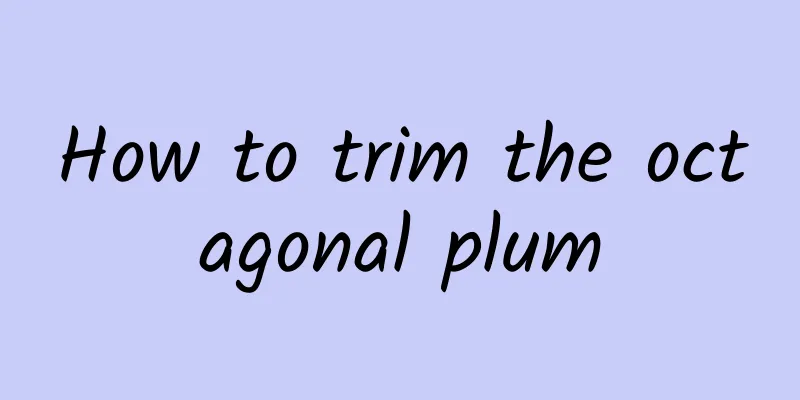How to trim the octagonal plum

When is the best time to prune the octagonal plum?The octagonal plum is usually pruned in late spring and early summer. The pruning of the octagonal plum is mainly for the purpose of cuttings. If you feel that the stem is slender, you can cut off a section and leave only 2-3 leaves to allow it to regrow. As for how many leaves to leave, it depends on personal preference, but pruning can indeed thicken the stem of the mother plant and increase the number of branches. Pruning and cutting of octagonal plumSubstrate: You can use vermiculite, perlite and peat in a ratio of 1:1:1. Plain sand, loam and sawdust are also acceptable. Put a thin layer of elastic cotton at the bottom of the pot. You can also use tiles instead. The advantage is that it is water-permeable and breathable, which is conducive to rooting. Because it is very thin, it is easy to pull apart when transplanting seedlings, which reduces root damage. You can also plant with it. Select cuttings: When selecting cuttings, just choose branches facing the sun. Thicker branches have a higher survival rate. If it is a new branch of the year, it is best to bring some old branches under the cuttings. If it is a new branch that has become semi-woody after June, there is no need to bring old branches. Soaking of cuttings: For large leaves, cut each leaf in half, leaving 2-3 leaves, and for small leaves, leave two leaves and one bud, about 7-10 cm long. Use a sharp knife to cut the base of the cutting into a horseshoe shape, and make sure the cut is flat and not damaged. Then soak the base of the cutting in rooting powder or naphthaleneacetic acid for several hours. Oblique insertion and drilling holes: After soaking, use a sterilized wooden stick of appropriate thickness to obliquely drill holes, then bury the cuttings, and water them thoroughly with a fine-hole watering can to make the substrate and the cuttings closely combined. The potting method will have better results. Heat preservation and moisture retention: 1 to 2 air holes should be opened on the plastic wrap, and ventilation should be kept open frequently to prevent excessive humidity and high temperature. Transplanting in pots: Place the cuttings of Bougainvillea in a place with sparse sunlight and care for it carefully. If all goes well, the cuttings will take root in more than 20 days and can be transplanted in pots in about a month. |
<<: How long is the growth cycle of Astragalus?
>>: How to change the soil of Impatiens
Recommend
What month is suitable for planting lotus root?
When to plant lotus root Lotus roots are generall...
The growing environment and local conditions of pitaya
Dragon fruit growth environment and conditions Dr...
Production and maintenance of green radish curtains
Maintenance tips for green radish curtains 1. Gre...
Can I still grow succulents in winter?
The first factor: temperature If you want to grow...
Add some little things when watering the flowers, and the green radish and asparagus fern will grow like crazy, reaching 20 meters in height!
Mosquito-repellent incense ash Now that the weath...
When is the crabapple blossom season?
1. Flowering Season Normally, crabapple blossoms ...
What is daylily?
What is daylily? Daylily is a vegetable of the As...
Oranges' growing environment and local conditions
Orange growth environment and conditions Oranges ...
How many years does it take for a sugar apple pot plant to bear fruit?
1. How many years can it bear fruit? This type of...
What are the breeding methods and precautions for Longtie?
Dragon Railway Introduction The dragon iron plant...
How to water Dutch chrysanthemums
1. Its demand for water This plant prefers a mois...
Pests of Prunus mume and their control
Prunus mume and leaf-feeding pests For the preven...
How to grow morning glory in autumn
1. Planting The branches of the plant will be com...
The growth environment and local conditions of Polygonatum odoratum
Polygonatum odoratum growth environment and condi...
Japanese cherry blossom pruning techniques
Pruning mechanism of Japanese late cherry blossom...









